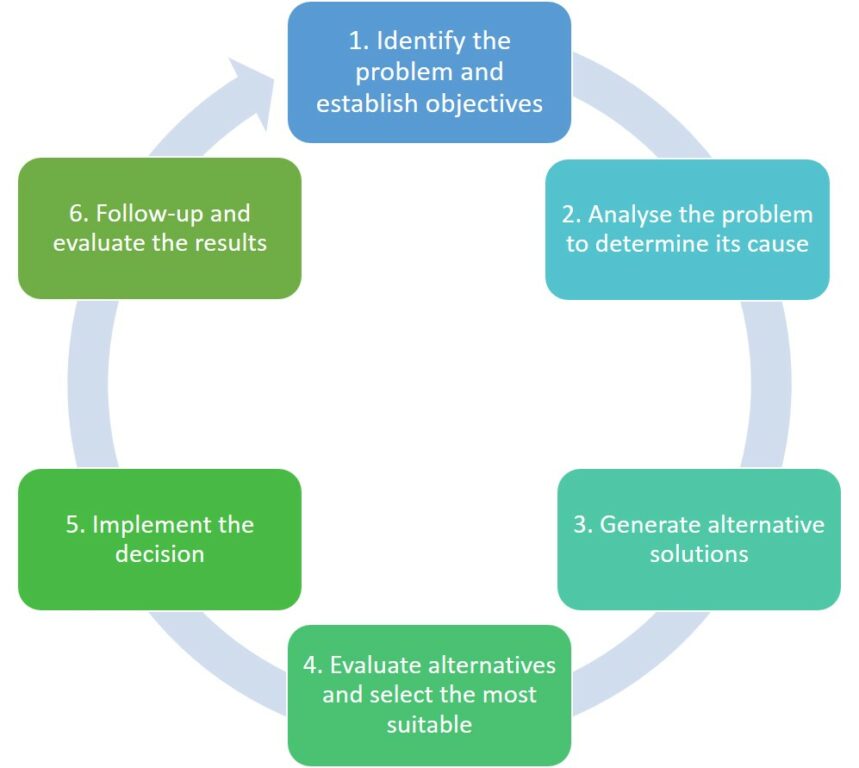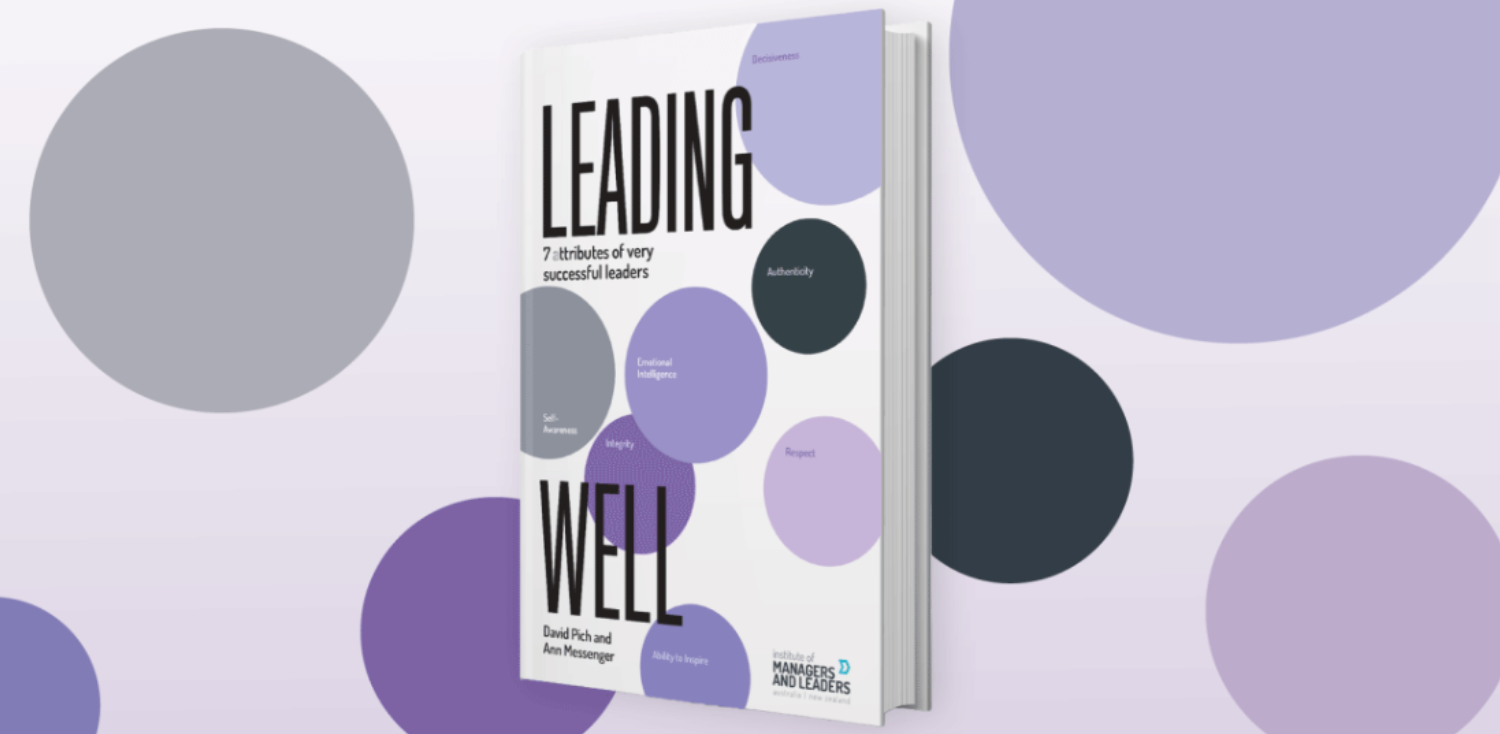Seasoned leader Trevor March CPMgr CMgr AFIML shares tips for helping employees to maintain focus and perform at their best in an increasingly distracted workplace environment.
Continue readingVirtual Development Day: Watch our recorded sessions
Click on the link below to enter your details and get access to the recorded sessions from our first ever IML ANZ Virtual Development Day. You will be redirected to the sessions upon submission.
MEMBER EXCHANGE – Tips for perfecting prioritisation
In the hustle of the modern workplace, it’s very easy to spend a lot of time completing not much. That is, people put a lot of time and effort into completing the least important jobs, while the things that really matter are overlooked or not given the attention they deserve.
Sometimes this is because we prefer to work on things that interest us, or we do the easy quick tasks because it is so satisfying to look at a list of completed jobs. Frequently, however, it is because we have not properly identified and prioritised what we should be doing.
So, what are the demands on your time? What techniques do you currently use to manage your time effectively? What tools can you use to help schedule tasks? How can technology help you prioritise?
Below are some guidelines to get you thinking about how to effectively prioritise your tasks and manage your time:
The five Ds
Most peoples’ days are so busy that they find it impossible to do everything. It is essential to decide what you will deal with now, do later, delegate, do only if time permits, and what you won’t do at all. This can help you develop a work schedule and set priorities that concentrate on activities that will contribute directly to your overall job goals. It allows you to distinguish between what’s important and unimportant, what’s vital and superfluous.
In summary, the five Ds:
- Do it now
- Do it later
- Do it if time permits
- Delegate it
- Dump it
To-do list
A lot of people use a to-do list but how effective and methodical is yours? No matter how good your memory is you’re probably far too busy to remember everything you need to do. Lists are indispensable to keep you focused on what you need to accomplish to achieve your goals, no matter how hectic things get. They save you from the ‘tyranny of the urgent’ – attending to whatever floats across your field of vision, whatever seems the most urgent at the time, or whatever ‘makes the most noise’.
Here are some specific things that to-do lists can be useful for:
- To plan your day or week
- To establish priorities to remind you to do things
- To note down promises and commitments you’ve made so you don’t forget them
- To remind you to follow up on promises others have made, tasks you’ve delegated, and finish off part-completed work.
- To group like tasks together, and to do them together in blocks of time
The A-B-C priority shorthand
The A-B-C method can be an effective way to set priorities. Look at your tasks, identify the important ones, those that most directly contribute to achieving results in your key result areas. Assign them an ‘A’ priority. Matters that are both urgent and important are ‘A’ priorities too.
Which tasks contribute least and can wait if you don’t have enough time to do them? These are activities that don’t contribute directly to your key result areas and are not urgent. Assign them a ‘C’ priority. The rest are ‘B’ priorities.
Try to get through as much of your to-do list each day as you can, focusing on your ‘A’ priorities. That way, if you don’t get everything done, it will be the least important things that are left. Don’t ignore the ‘Bs’ and ‘Cs’ though because many of them will be urgent ‘As’ if you don’t get on with them.
Tame the telephone
If someone calls at a bad time, say so and arrange a time when it will be convenient for you both to talk.
To prevent lengthy calls, stand up. Your voice will take on a more urgent tone and encourage callers to be to the point.
Make several outgoing calls together and have a note of what you want to discuss.
Keep a note of what you want to speak to people about as well as a note of telephone messages you leave for others on your to-do list. Cross their names off when they return your call and follow up anyone who doesn’t get back to you.
Conquer emails
Where possible control your emails by turning off the audio alert that announces new mail and check for new mail only when it’s convenient to do so in blocks of time.
Remove your name from distribution lists that send information you seldom have time to read.
Scan emails for priority and subject titles and read only the most important; delete the unimportant ones. Pop the rest into folders to read or action. Keep culling and filing read and sent emails, so the size of your files doesn’t build up to unmanageable proportions.
Master time management tools
Effective time-management primarily depends on personal discipline and willpower; planning tools can help you win that daily battle with time.
We are working in a modern workplace, with modern productivity issues. That means we need to resolve these issues with modern tools and approaches to productivity. Your team might all use the electronic calendar to manage their meetings, but that is only half of their workload. Most may still be using paper tools to manage their priorities, meeting notes and project information. Lead by example here and fully embrace technology to centralise and organise all of your work.
Here are a few additional guidelines to get you thinking about how to make the best use of diaries and calendars:
- At the beginning of the year, enter important dates such as staff meetings, vacations, and conferences.
- Break activities into time blocks, with a beginning and an end. Time management problems are often caused by fuzzy end times.
- Don’t allow the entire day to be booked out. Leave some spare time to accommodate unexpected interruptions and thus reduce messy rescheduling or cancellations.
- Avoid scheduling yourself too tightly. The pressure to finish one task or meeting in time to begin another reduces your effectiveness.
- Allow time for rest, lunch and relaxation; error rates and stress increase with lack of rest.
- Block in time to complete important projects and schedule enough time to build up momentum.
- Ensure you can always carry your paper-based or electronic diary with you.
- Understand your unique energy cycle. When are you full of bounce and energy, a bit flat, or somewhere in between? Learn to use your peak energy periods for activities requiring careful thought and effort and avoid interruptions during this time.
MEMBER EXCHANGE – The problem-solving process
We all encounter problems daily. That’s why we all benefit from good problem-solving skills.
In the workplace problem solving is an important part of any job. The skill with which we solve problems has a direct impact on our professional effectiveness. So let’s consider what problems you have solved recently. How have you handled them?
Although we are not always conscious of our method, most of us follow similar steps to solve problems. It is useful to increase our consciousness of these steps and apply a variety of proven problem-solving techniques to ensure we find effective solutions. Using the following process can improve our effectiveness in solving problems:
The process of solving problems

Identify the problem and establish objectives
This step is the most important and often the most difficult. It can be easy to jump into solution mode and spend surplus time looking for answers rather than having clarity on what really is the problem. Try to state the problem in a single sentence and ensure not to confuse the symptoms, the causes and the problem.
To establish objectives, think about the result you want. Compare where you are now and where you would like to be and be clear in what you are setting out to achieve.
Analyse the problem to determine its cause
In this step, it’s important to gather facts, ideas and opinions of others that may help in your analysis and assess the information without prejudice, preconceived ideas, or emotion to effectively determine the problem’s cause.
A technique used to uncover the main cause of the problem is to ‘ask why’ five times. Here is a ‘why’ chain for high employee turnover:
Why is there high employee turnover?
Why were the wrong people hired?
Why aren’t recruitment and selection techniques applied?
Why am I not confident in them?
Why is more training required?
We can determine from this chain the likely causes of this problem are poor selection and poor induction.
Generate alternative solutions
A choice of options needs to be considered in problem-solving. To find the best option, you must consider several solutions, that way you’re less likely to overlook the best course of action. Work on eliminating the cause of the problem and not just covering up its symptoms. Use brainstorming, creative thinking and ask others what they think to get the ideas flowing.
Evaluate the alternatives and select the most suitable
Evaluate your alternative solutions by considering the advantages and disadvantages of each. Remember the best solution will normally be the one with the most advantages and the fewest disadvantages. Ensure the most suitable option best meet your objectives.
Implement the decision
Now is the time to plan carefully how to implement your decision. Use the “who, how, what, where, why and when” prompts to develop your plan. Consider what could go wrong and how you will monitor progress to ensure your decision is working. Also, consider how you will communicate your decision to those impacted.
Follow-up and evaluate results
Routine follow-up checks will ensure that you have solved the problem. Check the symptoms again – have they gone? Take corrective action where necessary.
In summary, to continue to grow your problem-solving skills and build your personal effectiveness keep these guidelines front of mind:
- Adopt a systematic approach
- Focus on important decisions
- Avoid making snap decisions
- Don’t become a victim of analysis
paralysis - Base your decision on facts
- Don’t be afraid of making the
wrong decisions - Learn from your mistakes
- Use your imagination
- Resist making decisions under
stress - Make your decision and then move
on
Enhance your problem solving skills with our short courses
As you can see, these skills are essential to enhance your leadership and deliver results to your teams and clients. To become the best leader you can be, consider enrolling in our short course on problem solving and decision making where you will learn all of the above guidelines and essential skills to tackle any problem head-on.
Real rest: Switch off from work and feel good
By Jane Caro
We live in an era that worships work. Far too many of us believe that unless we are actively doing something every waking moment, we are wasting time. Many people feel guilty about scrolling aimlessly through social media, whiling away an afternoon (or even a whole day) binging on a TV series and/or nodding off on the couch.
I am not one of those people. We all have our gifts and my ability to be completely idle without guilt is one I value dearly.
Such is our worship of work that we even turn attempts to relax into a form of pressure. Wellbeing, mindfulness, meditation (yes, yes, I know they benefit many) are far too worthy and earnest for me. I don’t want to be lazy and do nothing because it’s good for me (even though it is). I want to do it because I like it and my joy in skiving off is actually enhanced by a messy house, laundry that needs doing or dishes that need washing.
SLAVE DRIVER
Perhaps this is also because I work for myself and I have never had a more demanding boss. She (me) is always taking on more work, agreeing to impossible deadlines and working on weekends. She says yes to far too much. Some of it unpaid! This slave-driver (me) is the reason I feel entitled to rebel against her (myself) on a regular basis and collapse on the couch, Netflix remote in hand and give myself over to blissful self-indulgence.
If you run a small business or work as a freelancer or subcontractor, you will know how hard it is to carve out a little time for yourself. If you are not actively working, you are accounting for that work, taking care of the inevitable admin tasks or you are actively seeking more work. It is hard to escape the nagging sense of guilt whenever you’re not actively engaged. But, take it from me, it is necessary both for you and your business. Let’s not even mention your family.
Recreation is a word that we no longer understand. It literally tells you to re-create yourself through activities – or lack thereof – that have no purpose but fun. It is no accident that creativity is part of the word. If you work till exhaustion, if you haul yourself miserably through every day or even most days, your productivity will fall. You are not at your best. Your heart is no longer in it. You’ve lost sight of why you started your business in the first place.
LOVE WHAT YOU DO
Every successful small business has one important similarity – a principal who loves what they do. Now, that doesn’t mean you have to love it every day, or love every task, or even every customer, but you have to love what you do and what you provide – at least most of the time. The paradox of hard work is that you can have too much of a good thing. If you lose your joy in your business for too long, you are at risk of eventually losing your business. When you lose joy, you lose creativity and the ability to come up with new solutions.
We have an epidemic of anxiety in our modern world, brought on for many, I believe, by overwork. Exhaustion is a result of working too hard for too long with no emotional reward. Exhaustion is useful to those who would control our world. Exhausted people, terrified of losing their income if they take so much as a holiday, are compliant people. It’s not just their businesses that become plodding and uninspired, it is their citizenship, their family lives and their view of the future. And, I know this is modern-day heresy, but I believe that if everyone worked 30% less, everything would improve. We’d be more joyful, rested, fun-loving, hopeful, generous, energetic and creative.
I know this is modern-day heresy, but I believe that if everyone worked 30% less, everything would improve.
Maybe the essential paradox of running your own business is that it may be the time when you let yourself lollygag, laze about, daydream and, yes, scroll aimlessly through social media, that is when you are able to have your best ideas and come up with solutions that all the agonising and late nights in the world will not liberate. You will also model sane behaviour to your employees so they too learn the value of rest and recreation, and so become more productive and enthusiastic. It isn’t the hours you put in that are of the greatest value. It may well be the hours you take out.
This article originally appeared in the December 2019 print edition of Leadership Matters, IML ANZ’s exclusive Member’s magazine. For editorial suggestions and enquiries, please contact karyl.estrella@managersandleaders.com.au.
Must Read: Leading Well: 7 attributes of very successful leaders
Derek Parker offers an in-depth look into the latest book that examines seven attributes of inspiring leaders.
This is the follow-up and companion to the 2017 IML ANZ publication Leadership Matters: 7 Skills of Very Successful Leaders. That volume was concerned mainly with the technical abilities required in senior roles – what David Pich CMgr FIML, Chief Executive of IML ANZ, describes as “the perspiration of leadership” in the introduction to the new book. Leading Well focuses on the inspirational side of being a leader: the personal, emotional, and psychological aspects. The seven attributes – respect, integrity, emotional intelligence, ability to inspire, authenticity, self-awareness, and decisiveness – were chosen through consultations with IML ANZ Members.
Respect was rated as essential in a survey, a point underlined in the chapter by Pich and Jamie Getgood. The key to respect is a willingness to listen to others, talk through their concerns, and empathise with their viewpoint. This is not easy in an era of diversity but the authors take the view that Australians are a tolerant bunch when it comes to cultural differences. They look at IML ANZ’s public statement on same-sex marriage as an example, noting that it was the result of discussions with Members. Respect, they say, is not about agreeing with everyone but about understanding and consideration. An expression of genuine gratitude is also a component of respect, and something that can go a long way in building strong relationships.
It is something of a balancing act but that is true regarding many of the skills examined in the book. Michelle Gibbings’s discussion of integrity acknowledges the difficulty of acting consistently and ethically in the face of competing stakeholder demands. She sees an ongoing tension between personal courage and consciousness of the business environment but she comes down on the side of having the courage to do the right thing. Integrity, once lost, is almost impossible to rebuild.
Allison Keogh’s contribution on authenticity picks up this theme. Authenticity is about aligning thoughts, words and actions, all stemming from a core of values. Say what you mean, mean what you say: it’s the same message whether applied to individuals or organisations. If you want an example of what not to do, she says, look at some of the practices in the financial services industry uncovered by the recent inquiry into banking.
Self-awareness is the first step to becoming a great leader, according to Margot Smith FIML. It means acknowledging your weaknesses and blind spots, but it also requires taking action to improve. She suggests some training methods although honest discussions with peers and mentors can also do much. It means admitting vulnerability but it is often the only way to move forward.
Many of the themes of the book come together in the final piece, an examination of decisiveness by Bill Kernoczy and Luke Challenor. Having to make the final call on a difficult issue is often seen as the central test of leadership. And, indeed, any issue that gets to the senior levels of an organisation is going to be difficult: the easy ones are decided elsewhere. Once upon a time a CEO would tick one or another box and walk away but Kernoczy and Challenor argue that the complexity of modern business means that the gut-feeling method no longer makes sense. Instead, they lay out a process of definition, analysis, evaluation, and consultation. They look at a number of models for making decisions, establishing the common thread as a need to follow through on implementation, review and feedback.
This is consistently useful stuff. In fact, all of the chapters in the book make a point of moving from theory to practice, with step-by-step guides and tools for self-diagnosis. Another important section is a series of interviews, conducted by IML ANZ chair Ann Messenger, with outstanding leaders. Each discussion has its worth but the views of Georgie Harman, the chief executive of the beyondblue organisation, are particularly interesting, especially in the areas of authenticity and humility.
Each of the chapters of the book has important things to say but it is taking the package as a whole that provides the most insight and direction. Whether you are already in a senior position or aspire to be there, you will find a great deal of value here.

Get your copy of IML ANZ’s latest book, Leading Well: 7 attributes of very successful leaders (Major Street Publishing, A$34.95).
The book highlights seven attributes that ignite inspiring leadership. It focuses squarely on the personal attributes that can transform managers into leaders and good leaders into great leaders.
Order your copy here.
This article originally appeared in the September 2019 print edition of Leadership Matters, IML ANZ’s quarterly magazine. For editorial suggestions and enquiries, please contact karyl.estrella@managersandleaders.com.au.
Career Doctor: How can personal resilience help with stress management?
By Peter Cullen FIML
Resilience has become increasingly important in the workplace due to the positive impact it can have on an individual’s wellbeing and performance. The Oxford English Dictionary definition of resilience is “the capacity to recover quickly from difficulties”.
Although some of us are more resilient than others, all of us become more susceptible to pressure and stress when our resilience is low. Everyone can benefit from activities that promote physiological, mental and emotional wellbeing.
STRESS ERODES RESILIENCE
Stress is the body’s natural response to pressure or alarming situations – those that make us uncertain whether or not we can cope. The factor or situation causing our stress either positively or negatively is called a stressor. Unfamiliar situations challenge or threaten us and increase our level of stress. A stress response may require higher energy levels to help us cope.
Occupational stress can be defined as the physiological, mental and emotional responses that occur when workers perceive an imbalance between their work demands, their capability, their access to resources and their level of control. Importantly, stress responses occur when the imbalance is such that the employee perceives they are not coping in crucial situations.
On the other hand, positive stress is beneficial and can improve performance. A natural and automatic function of the body is to provide extra energy to help us tackle a stressful situation. It will then naturally return to its former balanced state. This return to balance ensures ongoing health and wellbeing. Some of the body’s beneficial reactions to a stressful situation include: mental alertness, sugar release for energy, increased muscle responsiveness, faster heart rate, increased adrenaline and cortisol, increased blood pressure and faster breathing.
All these reactions occur automatically as the mind and body react to a stressful situation. It is necessary to remember that everybody copes differently with stress and everybody’s stress barrier is different.
BE SELF-AWARE, IMPROVE RESILIENCE
To improve how we manage our stress and be more resilient, we need to build our self-awareness to better understand where we are physiologically, mentally and emotionally at any point in time. A simple method to use when you are in the moment is:
- Identify how you are feeling and what you are thinking.
- Ask yourself what effect these feelings and thoughts are having upon you.
- Consider whether these feelings and thoughts are helpful or not.
- Take action to address these feelings and thoughts if they are unhelpful, or simply continue as is, if they are helpful.
Reflect upon a previous stressful event that tested your resilience and follow the above method in your mind. This will help you gain a greater understanding of how this may be useful for you the next time a stressful situation arises.
We can also build and strengthen our resilience by engaging in a variety of activities as part of our normal way of life. Here are some suggestions:
PHYSIOLOGICAL: Aerobic exercise, strength and conditioning, yoga or stretching, healthy nutritious eating, hydration, breath work, appropriate sleep.
MENTAL: Meditation, self-reflection to build self-awareness, relaxation techniques, reframe your thinking, establish boundaries, set achievable goals.
EMOTIONAL: Strengthen constructive relationships, be appropriately honest with yourself and others, respect yourself, talk openly with trusted friends, know and live your personal values, seek support when necessary, learn techniques to manage your emotions.
We all can improve our level of resilience and maintain a strong physiological, mental and emotional state. When are you going to start improving your resilience and be the role model for others to follow?
This article originally appeared in the June 2019 edition of Leadership Matters, IML ANZ’s quarterly magazine. For editorial suggestions and enquiries, please contact karyl.estrella@managersandleaders.com.au.
Why short courses fall short when it comes to leadership development
By Sam Bell FIML
Translating learning into behavioural change takes time and a lot of effort. Even more so when it comes to learning crucial skills that impact people. Skills vital to effective leadership such as time management, communication, emotional intelligence, influencing colleagues, motivating teams, nurturing high-performers and driving innovation require more than just a couple of days in a classroom. You’re simply not going to change someone’s behaviour by sending them on a two-day short course.
Unsurprisingly, only 10% of CEOs surveyed by McKinsey indicated they are confident their leadership development efforts would make a positive impact on their business.
It’s astonishing then that the market remains awash with ‘quick-fix’ and one-size-fits-all programs that promise to transform leaders after just a few days inside a classroom. To understand if there’s any merit to these claims, we need to understand the complexity of the learning process.
The birth of a myth
The concept that forming new habits takes just 21 days is a myth based on misinterpretations of the published work of Maxwell Maltz. The plastic surgeon famously observed that it took his patients at least 21 days to get used to any physical changes to their body.
The latest research shows that it takes at least 66 days to form a habit or change an existing one. Sadly, that realisation came too late and many programs, courses and self-help formulas are based on this 21-day myth. In fact, some courses promise to create new managers and leaders by sitting in a classroom for two days!
Additionally, leadership development is about a lot more than merely forming new habits. It involves deep learning and shaping the type of people who will act as a catalyst for positive organisational change.
Consuming versus cultivating
Another issue with the typical short course or program offered to today’s leaders is the fact that often it is heavily reliant on passive learning – or as some would say a strictly ‘teacher and classroom’ format.
In fact, adult learning principles backed by neuroscience indicate that leaders develop key capabilities not just by reading or hearing but by doing. What is required goes beyond just talking about the capabilities. Leadership development should involve dealing with real problems while applying new knowledge in a specific context.
Simply put, rather than consuming information leaders need to cultivate knowledge and skills. This is something that a typical classroom-based, short-course just cannot achieve.
Rigour not repetitions
Interestingly, recent research by Johns Hopkins University goes against another well-accepted belief that repetition is the best way to learn. This research reveals that the process called ‘reconsolidation’ – in which existing knowledge is recalled and modified with new knowledge – significantly improves the way participants learn motor skills.
Taking that principle and applying it to learning leadership capabilities for experienced professionals provides an insightful development solution. Leaders who seek development take with them a unique set of skills, a wealth of knowledge and a roster of experience. This is not about starting from ground zero, so the focus is building upon existing capabilities. To illustrate, leadership development doesn’t involve infants, so there is no need to repeat information.
What is needed, as pointed out in the research, is to reconsolidate. Modifying already learned skills and behaviours to adapt to new challenges.
To do that, leaders need to identify where they are at and what they would like to achieve. This should not be amalgamated for the entire class – this must be a personal, targeted analysis. Your challenges, organisational goals and experience will never be the same as the person next to you. There is no one-size-fits-all. This clearly cannot be addressed without courses incorporating a one-on-one element, either through coaching, mentoring, self-assessment or individually focused learning outcomes.
Assess the value of leadership development programs
It’s unwise to invest in your development as a leader on a program that offers little value. Unlike a physical product, it isn’t always easy to evaluate a course’s worth. However, based on our analysis of what it takes for leaders to gain an in-depth development of their capabilities, you can assess programs based on their format and learning outcomes.
Before you book yourself in another leadership development program, ask yourself:
- Will the allocated time for this course or program allow me to learn my required capabilities deeply?
- Does the format of this course or program involve simply classroom-based learning, or does it have elements of practical application and personalised development?
- Will this course or program provide me with the opportunity to assess the unique context in which I, as a leader operate within? Will it then equip me with the strategies to adapt my existing knowledge, skills and experience to lead effectively in real-world situations?
The answers to these questions impact not only your development but also your influence as a leader. If you aren’t moving forward as a leader, you risk falling behind and taking your team and organisation with you.
Become an intentional leader
IML ANZ offers leadership development programs that provide managers with the skills, knowledge and support to become intentional leaders.
Intentional Leadership Foundations: This program is designed to help ‘accidental managers’ become intentional leaders – helping them transition from individual contribution to succeeding through their team. The 12-week program blends facilitated learning with online study, leadership coaching, one-on-one mentoring, diagnostic tools and workplace-based projects.
Intentional Leadership Accelerate: This program supports managers of managers on their intentional leader journey. It focuses on the core skills to become a confident leader of managers and advances career progression. Upon completion of the program, you will have the opportunity to be accredited as a Chartered Manager, the highest status that can be achieved as a manager and leader.
Kicking Goals On and Off the Field
By Lisa Calautti
Sport, community and professional life have always been intrinsically linked for Canberra-based Dixon Advisory associate director Genevieve Bond AFIML.
As the youngest of five children who all loved sport, some of Bond’s earliest memories were watching her siblings from the sidelines, inspiring her to have a go at most sports from a young age. As a teen she played touch footy at state level and as the famous adage goes – the rest is history. “I have just never stopped playing,” she says. “There is something about sport, it’s more than just the physical workout. It’s an opportunity to de-stress and provides a strong sense of community.”
Sport has played a significant role in Bond’s life, personally and professionally. “Most of my closest friends are those who I have met through sport, I even met my husband on the touch football field,” she says.
Professionally, experiences in sport have taught her several important life lessons – many of which have translated to the workplace. “Every person on the field has an important role to play,” she concludes. “And this absolutely relates to business, when everyone works together to achieve something, there’s a shared sense of knowing that your contribution matters.”
As if the demands of touch footy weren’t enough, Bond started playing Women’s AFL as part of Canberra club team, the Belconnen Magpies. For a long time, Bond balanced her career and love for sport; progressing professionally, playing in representative teams across both sports; and still managing to find time to volunteer across both codes. “It’s important to give back, it ensures longevity for these local clubs – who can then have a positive impact on the lives of others,” she says. Now a mum of three children, Bond has scaled back her sporting commitments, but continues to play social touch footy weekly.
It was Bond’s AFL connections that led her to becoming a member of the GIANT Hearts Canberra, a women’s business coterie linked to the GWS Giants. “It’s a group of senior women in business affiliated with the sport, and it allows us to share our love for the game and benefit from each other’s support and networks. It has formed the loveliest little community bringing women together from all disciplines; from public through to private,” Bond says.
The camaraderie between the women has been rewarding on both a personal and a professional level, helping Bond develop as a person and as a leader in her career.
“I think for me my sporting connections and experiences have been incredibly valuable from a professional perspective. I’m a strong believer that you as an individual are responsible for your development, so it’s important to do things in your own time that help you improve professionally and personally. That’s what I have always done through sport, through memberships such as IML ANZ and now through the GIANT Hearts.”
Genevieve will be speaking on the impact of financial wellness on individuals in the workplace. IML ANZ Members enjoy free entry to this event to be held in Canberra on Tuesday, 14th May. Book now to attend a Focusing on Financial Wellness session in Canberra, Sydney or Adelaide.











